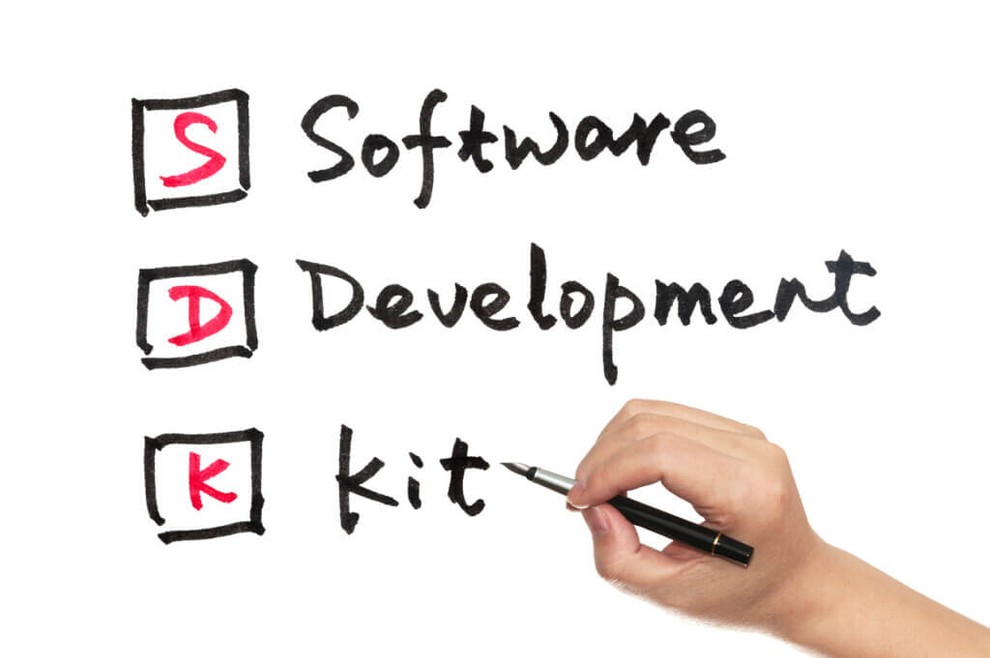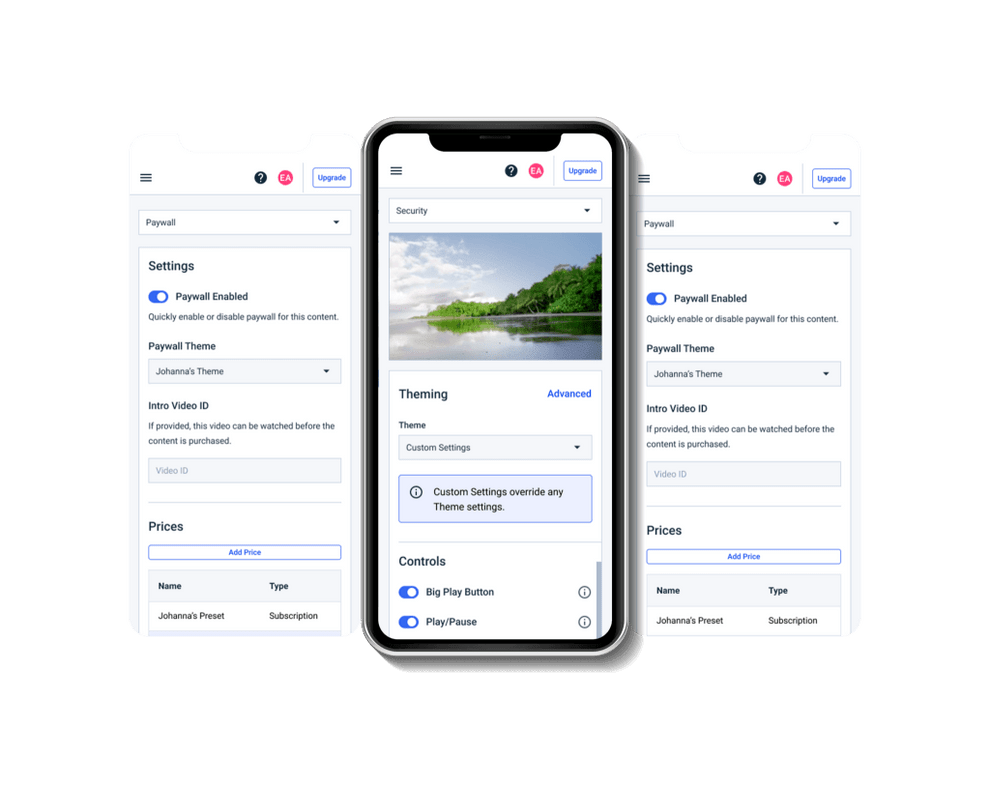How To Make Live Tv App For Android
By 2023, 2.72 billion people are forecast to watch live or on-demand videos on their mobile devices. This is up from 2.16 billion in 2019, and a CAGR growth rate of 6%. These stats make up a small portion of a massive trend.
In recent years, more and more online activity is moving onto mobile devices. Given that shift, it is wise for professional broadcasters to make their video content available to viewers on mobile devices.
In this article, we will take a look at how to build a live streaming app with tools from your online streaming platform. We'll start out by looking at some important information about the growing mobile streaming industry before comparing apps for broadcasting and watching mobile video content.
Then, we'll dive into more technical live streaming details, including how to set up mobile apps via APIs and SDKs from professional video streaming platforms . We will also cover HTML5 video players which have been revolutionary in the world of mobile streaming.
Table of Contents:
- What is a Live Streaming App?
- Why is Mobile Streaming Important?
- The Basics of Live Streaming App Development
- What is Video Streaming API?
- What is Live Streaming SDK?
- What is an HTML5 Video Player?
- How To Build a Live Streaming App in 5 Steps
- What to Do After Launching a Live Streaming App
- Conclusion
What is a Live Streaming App?

Mobile live streaming has a double meaning. It could refer to broadcasting video from a mobile device , or it could mean accessing online video content on a mobile device. It is important to acknowledge that this post is talking about viewers accessing and streaming content from their iPhones and Androids.
Many broadcasters use mobile streaming apps to house their streaming services, like Netflix or Hulu.
Creating a custom mobile app allows broadcasters and content creators to design the exact type of user experience they want. Modern mobile live streaming apps vary widely in style and functionality. Some are simple platforms, while others provide access to a whole library of on-demand and live streaming content.
For broadcasters looking to monetize their video content, mobile apps are ideal. For example, building a scalable mobile app has the potential to grow your subscriber base hugely.
As you'd expect, creating your own live streaming app does require some resources to create. These investments may be hefty in the beginning, but they can help expand the potential of your streaming business.
Building a live streaming app can work great for TV stations, sports broadcasting, news, and other outlets that have a large collection of content and live events to share with their audience.
Why is Mobile Streaming Important?

Before we jump into how to build a live streaming app, let's look at a few of the statistics around mobile streaming so that you get a better idea of how important mobile live streaming is.
These numbers demonstrate how the growing trend towards mobile viewing is here to stay.
- More than 58% of video plays globally were on mobile devices in late 2017. That figure rose to 60% by mid-2018 and continues to climb in 2019.
- By 2023, three-quarters of all mobile traffic will be video. Mobile video is pushing the envelope of data and helping drive forward new technologies like 5G.
- Fans increasingly watch sports on phones and mobile devices. More than 30% of fans now stream sports to their phones or tablets.
- 80% of sports fans use a " multi-screen " approach while watching sports, looking up stats, or chatting with friends while watching.
- According to David Jurenka, the NFL's senior vice president for digital media, "Fans aren't differentiating between a TV, tablet or phone."
Creating a live streaming app is a great way to stay in front of your viewers on their mobile devices.
The Basics of Live Streaming App Development
When it comes to live streaming app development, there are several different approaches a broadcaster can take. Developers can get as creative as they'd like, but all live streaming apps require some common technology.
Before you build a live streaming app with Dacast or another online video host, it is important to identify and understand the three essential technical aspects of the mobile broadcasting game.
To give you a better foundation in live streaming app building, let's discuss video streaming API, live streaming SDK, and HTML5 video players .
What is a Video Streaming API?
The term API is short for Application Programming Interface. API is a simplified, standardized coding language that allows a developer to easily interact with a given software or application.
In other words, API is like a set of detailed instructions for developers. These make it easy to create a mobile app that interfaces with an online video platform like Dacast. Your developers can use the commands that are specified in the API to make a mobile app that connects with the streaming platform.
When it comes to professional broadcasting, there are two types of API to keep in mind: player and video.
Video API helps you access your video content management system (CMS) to customize the backend broadcasting experience and access additional features. Player API is used for customizing the video player.
When you build a live streaming app, you'll need to use player API since it enables your developers to create a player that works seamlessly with customized mobile apps.
According to Streaming Media , "The video workflow and distribution environments are incredibly complex, and the way to build a best-of-breed system or even just gain finer control over tasks—especially when delivering video at scale—is by API."
Most businesses are migrating to API-based workflows for online video. According to our internal analytics, the number of viewers who watch Dacast live streams and on-demand video on mobile devices increased from 9% in 2016 to 39% in 2017. That amounts to roughly a five-fold increase . That increase was highest among broadcasters using Dacast APIs, and the number continues to rise today.
What is a Live Streaming SDK?

The key element in building a mobile app is a live streaming SDK .
SDK stands for Software Development Kit. NordicAPIs defines an SDK as "a set of tools, helper libraries , relevant documentation, code samples, processes, and or guides that allow developers to create software applications on a specific platform."
In other words, a live streaming SDK is a kind of technology that allows developers to easily create actual working examples. To put it into perspective, video broadcasting API is like a set of instructions, and video streaming SDK is more of a toolkit that helps you put those instructions into use.
Dacast offers both iOS and Android SDKs to make live video streaming app development easy for broadcasters and developers. These live streaming SDKs make it possible to build, test, submit to the app stores, and release a mobile video application in as little as one month.
With the support of these toolkits, you can also integrate all of the great features of the Dacast platform, including:
- Video monetization
- Analytics
- Security options
The Dacast code imports directly to Xcode or Android Studio, allowing a developer to get started right away. Comprehensive documentation makes it easy to use these SDKs effectively as possible.
We'd also like to point out that in the past, m3u8 links were used for mobile streaming app building. However, SDKs have since replaced this technology.
What is an HTML5 Video Player?

Before the popularization of iPhones, iPads, and other iOS mobile devices, most streaming over the internet using Adobe Flash Player. Since this video player is not compatible with mobile devices, Apple developed a protocol called HLS which allows viewers to watch content through an all-device HTML5 video player .
HTML5 video players are considered universal. They are easy to embed and are totally customizable.
Since an HTML5 video player is compatible across all devices, it is the best video player for building your mobile streaming app .
5 Steps to Build a Live Streaming App

The process of building a live streaming app is pretty straightforward, but it does require a bit of technical know-how. If you do not have an app developer on your team, we recommend hiring one because creating a mobile app is not a "DIY" sort of task.
That said, here is how to build a live streaming app in 5 steps.
1. Choose an Online Video Host
In order to build a live streaming app, you're going to need to invest in online video hosting . All of your video content will live on this platform and you'll simply embed its video players in your app.
The platform you choose will depend on your unique streaming needs. If you're looking to build a live streaming app, features like API, SDKs, and an HTML5 video player are non-negotiables. Look for additional feature offerings based on your streaming goals. If you want to generate revenue on your video content, you'll want to look at monetization support.
Your budget should also come into play. Look at different pricing plans, and see what you can afford. Consider your desired return on investment (ROI) as you set your budget.
To see how Dacast stacks up against the top platforms on the market, check out our video hosting platform comparison . If you decide to use Dacast, you need to sign up for an account. Premium accounts and higher have access to the Dacast video API .
2. Download SDK for iOS or Android
Once you choose your online video hosting platform, download the live streaming SDK that your platform provides. If you're using Dacast, this is pretty simple. All of our API and SDK code is documented in a player documentation page that is pretty easy to navigate.
At this point, you will have to figure out whether you're developing an app for iOS or Android. You can create both but focus on one at a time. We recommend starting with the one that aligns with the operating system that is most used by your audience.
3. Load SDK to Mobile Development Software
You're going to need a mobile development environment, such as Android Studio or Xcode. You must choose an app that offers support for your specific development and streaming needs.
Once you've chosen one, upload your SDK to this platform.
4. Begin Live Streaming App Development
Use the provided API code and live streaming SDK tools to develop your mobile app. At this point, you will customize your app to best represent your brand and create the best viewer experience.
This is where the support of an experienced developer comes into play. Hiring a professional will help to bring your vision to life. A small mistake can affect the functionality of your app, so support from somebody with technical know-how is important.
5. Package and Submit App
Once your app is complete, package the app and submit it for approval to the Apple App Store or Google Play Store. Here's the best guide for this process .
Alternatively, you can use internal distribution mechanisms and have viewers download the app right from your website.
What to Do After Launching a Live Streaming App
Once your app has been submitted and approved by the App Store and/or the Google Play Store, it is time to promote it.
First and foremost, you're going to want to encourage your existing audience to download your app. Make posts on social media and send a blast out to your email list.
From there, you should design a strategic marketing plan. Determine the best way to reach your audience and how you are going to make your offer. You could use content marketing, paid ads, or a combination of both.
If you're monetizing your video, your desired conversion will be more than an app download. You will likely want your audience to subscribe or purchase access to specific content.
Conclusion

Are you ready to build a live streaming app to reach your viewers on their mobile devices?
As our 5 step breakdown shows, this process is very easy to follow, especially if you have someone on your team who is familiar with the live video streaming app development.
If you need technical support or consultation, Dacast offers a range of professional services including app creation. Our technicians can help you get up and running in no time.
If you want to test out the Dacast platform before you're ready to commit, we invite you to take advantage of our 30-day free trial. All you have to do is sign up and start streaming. No credit card required.
GET STARTED FOR FREE
Any questions, comments, or ideas about encoding software? We love to hear from our readers, so post your thoughts in the comment section below. We will get back to you. Also, for exclusive offers and regular live streaming tips, you can join our LinkedIn group.
Thanks for reading, and as always, best of luck with your live streams!
How To Make Live Tv App For Android
Source: https://www.dacast.com/blog/how-to-build-live-streaming-app/
Posted by: vasquezsubmis.blogspot.com

0 Response to "How To Make Live Tv App For Android"
Post a Comment